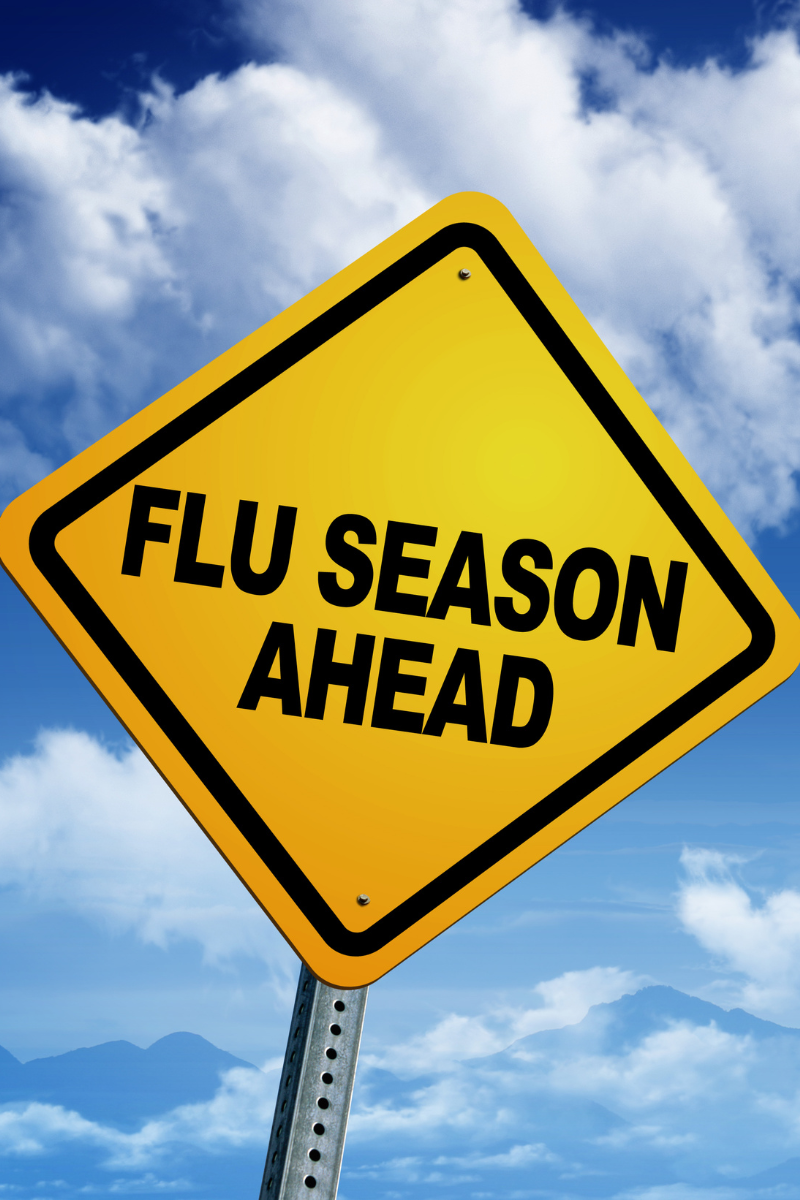The Behavioral Health Gap: Why Integration Can't Wait Until 2026
Every October, Mental Health Screening Month reminds us of a truth we can’t ignore: behavioral health isn’t a side issue; it’s a frontline crisis. With suicide rates climbing and access gaps widening, waiting until 2026 for full integration isn’t just a delay, it’s a gamble with human lives. Screening without follow-up is an empty promise. Integration means embedding mental health into everyday care, so patients don’t fall through the cracks. The question isn’t if we integrate, it’s how fast we act.
Building on Our Last Conversation
In our recent post, we showed how promising models can stall without sustained funding and leadership. Today, we’re expanding that lens nationally and urgently: behavioral health integration can’t wait until 2026.
The Crisis We Can’t Ignore
Mental Health Screening Month is more than a calendar observance—it’s a yearly pulse check on a crisis that touches nearly every family. Mental Health America’s 2025 screening report found that 4 in 5 screeners showed signs of a mental health condition, and nearly half of youth reported frequent suicidal ideation. That’s not a blip… it’s a siren.
At the same time, CDC data confirm the scale of loss: over 49,000 people died by suicide in 2023—about one death every 11 minutes. More than half involved firearms. These are preventable deaths, and upstream integration saves lives.
Why Integration Is Urgent
Integration means embedding behavioral health alongside primary and specialty care—so screening, brief intervention, medication management, psychotherapy, and care coordination operate as one continuous experience. It’s not new, but it’s still not universal. Three reasons we can’t wait:
Lives are at stake. Suicide remains among the nation’s leading causes of death, with the CDC documenting ~49,000 deaths in 2023; prevention requires routine screening + rapid follow‑up embedded where patients already receive care.
Access gaps are widening. Over 122 million Americans live in mental‑health shortage areas, with many rural counties entirely designated as HPSAs. Integration brings care closer to where people live and already seek medical help.
Workforce strain is real. Burnout and attrition ripple through every service line. Leaders now frame connection and psychological safety as strategic responsibilities—not perks—because disconnection erodes quality and retention.
What Screening Month Tells Us
This year’s theme, “Turn Awareness into Action”—is a challenge to move beyond posters. Screening without rapid, integrated follow‑up is an empty promise. Make it routine to screen, warm‑hand‑off, and schedule in the same visit, every time. Learn more from MHA.
Models That Work (and Scale)
The Certified Community Behavioral Health Clinic (CCBHC) model is designed for no‑wrong‑door access, 24/7 crisis response, and tight coordination with primary care and social services. It serves anyone, regardless of ability to pay, residence, or age.
The bottom line: When behavioral health is integrated into everyday care, people enter care faster, stay engaged, and experience safer transitions, and systems gain visibility across the whole patient journey.
Four Moves Health Leaders Can Make Before Year‑End
Embed screening everywhere. Make PHQ‑9/GAD‑7 (or age‑appropriate tools) standard in primary care, pediatrics, oncology, cardiology—then hard‑wire the follow‑up pathway. MHA’s screening hub | CDC prevention resource
Stand up integrated care teams. Pair prescribers with therapists, care coordinators, and peers; build shared huddles and same‑day warm handoffs. CCBHC requirements for scope & coordination.
Close the rural gap. Use tele‑BH and collaborative care to extend reach into HPSA counties while you recruit. Start with a clear paneling model and measurable access targets. HRSA HPSA dashboard | KFF HPSA stats
Protect your workforce. Treat loneliness and burnout as quality and safety issues. Invest in team connection rituals, reflective practice, and trauma‑informed supervision. Read HBR’s “Loneliness Is Reshaping Your Workplace.”
Ready to Turn Awareness into Action? (Free Consult)
Don’t wait until 2026. If you’re a clinic, health system, or community partner looking to stand up or strengthen integrated behavioral health, book an initial consult with our Co‑Founder, Nathan—a Behavioral Health Nurse Practitioner with deep experience bridging primary care and outpatient behavioral health. We’ll help you assess current state, map realistic integration phases, and set metrics you can actually sustain.
References & Further Reading
CDC – Suicide Data and Statistics (2023 final + provisional insights): Data hub, Facts overview, About prevention & 988
CDC MMWR (Apr 2025) – Suicidal thoughts and exposure to suicide among U.S. adults: Read the MMWR note
NCHS Data Brief (Sept 2025) – Changes in suicide rates 2022→2023: Web summary | PDF
Mental Health America (May 2025) – Mental Health Month: “Turn Awareness into Action” and screening data: Press release
SAMHSA – Certified Community Behavioral Health Clinics: Program overview | Certification criteria PDF | Evaluations & reports | Criteria FAQs
Access Gaps: HRSA HPSA dashboard • KFF State Facts Mental Health HPSAs
Workforce & Culture: HBR (Sept 2025) Loneliness Is Reshaping Your Workplace • National Council (Sept 2025) Workforce under pressure & future shortages
If you or someone you know is in crisis: Call or text 988 (U.S.) for 24/7 confidential support. Learn more at the 988 Suicide & Crisis Lifeline.
From Prepared to Proactive: How Your Lab Can Lead This Respiratory Season
Respiratory Season 2025–2026: Lab Readiness That Works
Respiratory season is here, bringing COVID‑19, flu, and RSV surges. For clinical labs, success means more than stocked supplies. It’s about cross‑trained teams, streamlined workflows, and rapid, accurate results. Sparks & Sage’s 10‑point readiness checklist helps healthcare leaders move from reactive to resilient, protecting turnaround times and patient care.
The Calm Before the Surge
Every September, I can feel it coming. The mornings get cooler, the leaves start to turn, and in labs across the country, there’s a quiet hum of anticipation. For the public, fall means pumpkin spice and football season. For those of us in healthcare, it means respiratory season — and the stakes are high.
The 2025–2026 respiratory season is shaping up to be another complex one. The CDC’s latest Respiratory Disease Season Outlook projects a similar combined peak hospitalization rate for COVID‑19, influenza, and RSV compared to last year, but with the added challenge of multiple peaks and the possibility of a COVID‑19 variant with moderate immune‑escape properties.
If you’ve ever been in a lab during a surge, you know what that means: phones ringing off the hook, couriers rushing in with coolers, instruments running nonstop, and staff juggling priorities like air‑traffic controllers. The difference between chaos and controlled urgency? Readiness.
Why This Season Matters More Than Ever
Respiratory season isn’t just “flu season” anymore. It’s a multi‑pathogen, multi‑surge challenge that tests every part of your operation.
CDC Outlook: Expect similar overall hospitalization rates to last year, but with possible overlapping surges of COVID‑19, influenza, and RSV.²
Patient Flow Coordination: A 4‑hour delay in results can mean patients boarding in the ED, delayed admissions, and frustrated clinicians.
Policy Shifts: Vaccine recommendations, testing algorithms, and reporting requirements are evolving - and your protocols need to keep pace.³
The Four Pillars of Readiness
Before we get to the checklist, let’s frame the work around four key domains , each with real‑world examples from labs I’ve worked with:
Staffing & Surge Planning — People are your most valuable (and most limited) resource.
Supply Chain & POCT Lot Verification — No supplies, no testing.
Pre‑Analytic QA & Specimen Transport — Quality starts before the analyzer.
Result Turnaround, Reflex Logic & Escalation — Speed and accuracy only matter if results get to the right hands at the right time.
Pillar 1: Staffing & Surge Planning
In one rural hospital I worked with, the respiratory surge hit during a week when two senior techs were out sick. Because they had cross‑trained their phlebotomists on rapid flu and COVID‑19 testing, they kept turnaround times under 45 minutes, even with double the usual volume.
Key Actions:
Finalize on‑call rotations before October 1.
Cross‑train staff on multiple platforms (molecular, antigen, rapid) to avoid single‑point failures.
Identify backup personnel for critical roles — and make sure they’re actually trained, not just “on paper” coverage.
Consider staggered shifts to extend coverage without burning out your core team.
Pillar 2: Supply Chain & POCT Lot Verification
During the 2022–2023 season, one multi‑site system I consulted with avoided a major testing halt because they had verified and stocked extra POCT lots in advance. When a manufacturer recall hit mid‑season, they simply switched to their validated backup lots, no downtime, no panic.
Key Actions:
Conduct a full inventory audit of swabs, reagents, cartridges, and PPE.
Verify lot numbers and expiration dates for all POCT kits — and document the verification in compliance with CLIA requirements.⁴
Establish reorder triggers based on usage rates, not just “when we’re low.”
Identify alternate vendors for critical supplies.
Pillar 3: Pre‑Analytic QA & Specimen Transport
I’ve seen beautifully run molecular labs grind to a halt because specimens arrived unlabeled or at the wrong temperature. In one case, a simple courier training session cut pre‑analytic rejections by 60% in two weeks.
Key Actions:
Review specimen labeling protocols and rejection criteria.
Audit temperature control during transport — especially for off‑site collection points.
Conduct mock audits to identify bottlenecks or compliance gaps.
Ensure couriers understand the urgency of respiratory specimens.
Pillar 4: Result Turnaround, Reflex Logic & Escalation
One health system reduced unnecessary repeat testing by mapping a clear reflex pathway: COVID‑19 negative → Influenza A/B → RSV. This not only saved reagents but also sped up reporting by 20%.
Key Actions:
Map reflex testing pathways to support diagnostic stewardship.⁵
Define escalation protocols for delayed or inconclusive results.
Ensure critical results are communicated directly to clinical teams — not just posted in the EMR.
Monitor turnaround time (TAT) metrics daily during peak season.
✅ The 10‑Point Lab Readiness Checklist
Staffing Plan Finalized — On‑call schedules, surge staffing, and cross‑training confirmed.
Inventory Audit Complete — Supplies, reagents, and POCT kits verified and stocked.
Lot Verification Logged — All POCT lots validated and documented.
Specimen Transport Reviewed — QA checks on courier routes and temperature logs.
Pre‑Analytic SOPs Updated — Labeling, rejection criteria, and intake procedures aligned.
Reflex Testing Logic Mapped — Clear pathways for multi‑virus panels and follow‑up testing.
Escalation Protocols Defined — Delayed or critical results are routed appropriately.
Communication Channels Active — Lab‑to‑clinical alerts and updates streamlined.
Contingency Plans Ready — Backup instruments, alternate vendors, and emergency contacts listed.
Staff Briefing Scheduled — Team‑wide readiness meeting set before October 1.
Bringing It All Together
A checklist is only as good as the conversations it sparks. Use this as a living document — review it with your team, adapt it to your facility’s realities, and revisit it as the season unfolds.
Readiness isn’t just about avoiding problems. It’s about positioning your lab as a trusted, proactive partner in patient care. When you can deliver accurate results quickly, communicate effectively, and adapt to changing demands, you’re not just “keeping up” — you’re leading.
Download your Printable copy!
Ready to Lead with Confidence?
Whether you’re a rural hospital lab or part of a multi‑site system, this season demands more than preparedness; it demands strategic alignment.
At Sparks & Sage Consulting, we specialize in helping labs move from reactive to resilient. In just 60 minutes, we’ll walk through your readiness plan, identify gaps, and offer tailored, actionable solutions that fit your lab’s size, scope, and mission.
🎯 Book your 60‑Minute Respiratory Season Readiness Consult today
Let’s make sure your lab is ready to deliver — no matter what this season brings.
📚 Further Reading & References
CDC. 2025–2026 Respiratory Disease Season Outlook. (Aug 25, 2025). Retrieved from CDC
American Hospital Association. CDC Releases 2025–26 Respiratory Disease Season Outlook. (Sep 3, 2025). Retrieved from AHA News
CDC. Clinical Overview of Respiratory Illnesses: Recommendations for the 2025–2026 Season. (Aug 2025). Retrieved from CDC
CMS. CLIA Final Rule — Proficiency Testing and Personnel Qualifications. (2024). Retrieved from CMS QSO‑24‑15‑CLIA
Morreale, E. (2025). The Evolving Global Landscape of Reflex Testing. Retrieved from LGC Clinical Diagnostics








